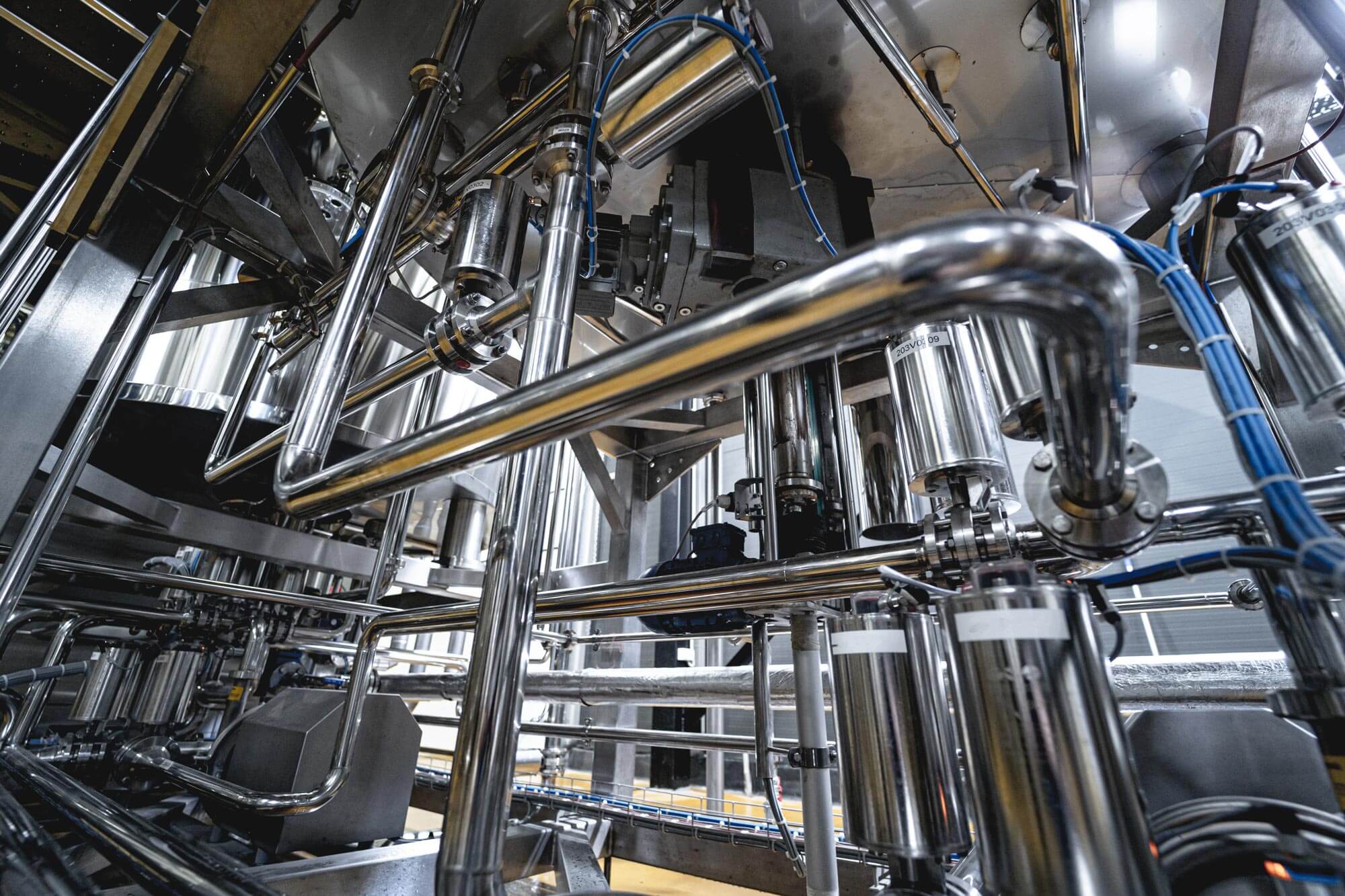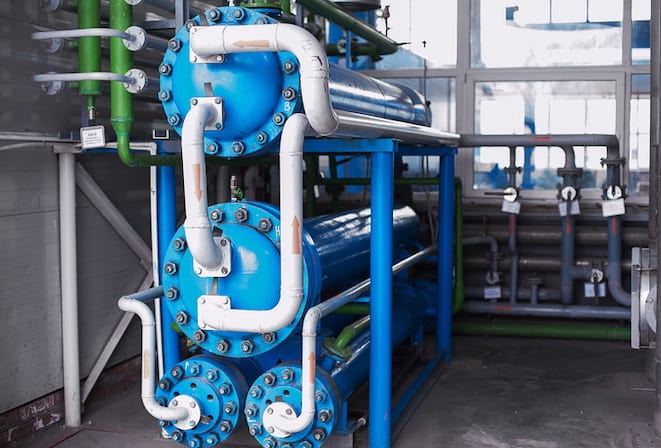Actionable Tips for Using DVS Heat Transfer Systems in Data Centers
Wiki Article
A Comprehensive Guide to Selecting the Right Heat Transfer Systems for Your Requirements
Picking the appropriate Heat transfer system is necessary for functional effectiveness. Numerous systems deal with different demands, affected by elements such as temperature level variety and liquid kind. Recognizing the concepts behind Heat transfer, such as transmission, radiation, and convection, is critical. In addition, reviewing energy resources and maintenance techniques can affect lasting efficiency. A closer evaluation of these considerations discloses how to tailor a system to particular demands. What should one prioritize in this complex decision-making process?Recognizing Heat Transfer: Key Ideas and Concepts
Heat transfer might seem like an uncomplicated principle, it incorporates a variety of concepts that are basic for reliable system design - DVS Heat Transfer Systems. Recognizing these principles is important for designers and developers who aim to optimize thermal efficiency in numerous applications. Conduction, as an example, involves the transfer of Heat with strong materials, while convection describes the motion of Heat within fluids. Radiation, one more essential principle, defines how Heat can be transferred through electro-magnetic waves. Each of these devices plays an important role in identifying how energy relocates within a system. By thoroughly grasping these principles, specialists can make educated choices, ensuring that Heat transfer systems run effectively and meet the specific demands of their applications
Sorts Of Heat Transfer Solutions: An Overview
Understanding the concepts of Heat transfer prepares for discovering the numerous sorts of Heat transfer systems offered. Heat transfer systems can be classified largely right into three types: convection, conduction, and radiation. Conduction entails Heat transfer via strong materials, relying upon direct call between particles. Convection, on the various other hand, takes place in liquids (gases and fluids) where the motion of the fluid itself facilitates Heat transfer. Radiation includes the transfer of Heat through electromagnetic waves and does not call for a tool, permitting it to occur in a vacuum cleaner. Each kind of system has distinctive qualities and applications, making it necessary for people and organizations to thoroughly assess their specific requirements when picking the most suitable Heat transfer solution.Applications of Heat Transfer Solutions in Different Industries
Heat transfer systems play an essential role across different markets, affecting performance and item high quality. In industrial production procedures, they facilitate accurate temperature control, while in food and beverage handling, they ensure security and preservation. Additionally, cooling and heating and environment control systems depend heavily on effective Heat transfer to keep comfortable settings.Industrial Manufacturing Processes

Countless industrial manufacturing procedures depend heavily on effective Heat transfer systems to optimize efficiency and boost product quality. In markets such as metalworking, Heat exchangers play an important role in preserving excellent temperature levels throughout welding, casting, and forging. These systems guarantee uniform Heat circulation, which is essential for attaining preferred product properties. Similarly, in the chemical manufacturing industry, Heat transfer systems assist in precise temperature control during responses, influencing return and safety. Moreover, in fabric production, efficient Heat monitoring is very important for coloring and completing processes, affecting shade uniformity and textile high quality. By picking suitable Heat transfer technologies, suppliers can boost energy performance and minimize operational expenses, inevitably leading to a much more affordable and sustainable manufacturing atmosphere.
Food and Beverage Processing
Efficient Heat transfer systems are equally vital in the food and beverage processing sector, where maintaining suitable temperature levels is essential for food safety and security and top quality. These systems play an essential function in procedures such as food preparation, pasteurization, and sterilization, making certain that products are risk-free for intake and preserve their dietary worth. Heat exchangers, for circumstances, successfully transfer Heat between fluids, maximizing energy use while decreasing temperature changes. Furthermore, refrigeration systems are basic for extending and preserving subject to spoiling items shelf life. The option of Heat transfer technology directly affects operational effectiveness and item honesty, making it vital for food and drink suppliers to select the suitable systems tailored to their particular processing needs. This careful selection ultimately adds to customer satisfaction and food safety.
A/c and Environment Control
While many industries rely upon Heat transfer systems for effectiveness, A/C (Heating, Ventilation, and Air Conditioning) plays a vital duty in keeping interior climate control across different setups. These systems use Heat transfer principles to regulate air, temperature level, and moisture high quality, ensuring convenience and security in domestic, commercial, and commercial settings. Appropriately made HVAC systems boost power effectiveness, minimize operational expenses, and minimize ecological effect. In business buildings, as an example, reliable environment control adds to worker productivity and client satisfaction. In industrial applications, heating and cooling systems help maintain ideal problems for equipment procedure and item preservation. Choosing the best Heat transfer system is vital for conference particular environment control requirements and attaining general system performance.Reviewing Energy Resources for Heat Transfer Solutions
In evaluating power resources for Heat transfer systems, a comparison of renewable energy alternatives and fossil gas factors to consider is necessary. Renewable sources, such as solar and wind, deal sustainable options that can lower ecological impact. Conversely, fossil fuels remain common due to DVS Heat Transfer Systems their well established facilities and power thickness, prompting a cautious analysis of both choices.Renewable Power Options

Fossil Fuel Considerations
Evaluating fossil gas factors to consider is crucial for the performance and sustainability of Heat transfer systems. Fossil fuels, such as gas, oil, and coal, are standard energy sources that provide substantial Heat output, making them preferred selections for household and commercial applications. Their environmental influence, consisting of greenhouse gas emissions and source exhaustion, increases concerns. When selecting a warmth transfer system, it is important to assess the availability, price, and regulative factors related to these fuels. Furthermore, the efficiency of nonrenewable fuel source systems should be considered, as higher efficiency can mitigate some environmental downsides. Ultimately, a well balanced method considering performance and sustainability can lead decision-makers toward the most proper Heat transfer solution for their certain needs.Variables to Think About When Picking a Heat Transfer System
Choosing an appropriate Heat transfer system calls for careful consideration of different elements that can substantially impact effectiveness and efficiency. One essential factor is the operating temperature level array, which dictates the materials and design appropriate for the application. In addition, the kind of liquid made use of in the system-- whether gas or liquid-- affects Heat transfer efficiency and compatibility. The system's size and capability have to align with the specific requirements of the procedure to avoid inefficiencies. Energy source accessibility is additionally vital, influencing operating prices and sustainability. In addition, the installment environment, consisting of room restraints and accessibility for maintenance, plays a significant role in system option. Governing conformity and safety and security requirements should be considered to assure the system meets all legal demands.Maintenance and Effectiveness Optimization for Heat Transfer Equipments
Maintaining Heat transfer systems is necessary for making certain maximum efficiency and long life. Routine maintenance tasks, such as cleaning up Heat exchangers and evaluating insulation, assistance protect against performance losses because of fouling and thermal linking. Furthermore, keeping track of system parameters, consisting of stress and temperature, enables early detection of abnormalities, reducing downtime and pricey repair services. Implementing a precautionary maintenance schedule can maximize performance and extend the life-span of components. Upgrading to sophisticated control systems can boost operational effectiveness by readjusting to varying problems and loads. By prioritizing upkeep and performance optimization, drivers can achieve minimized power intake, lower operational prices, and enhanced general system integrity, ultimately resulting in much better source application and a more sustainable operation.Future Fads in Heat Transfer Technologies
As industries progressively focus on sustainability and power effectiveness, future patterns in Heat transfer technologies are set to undergo substantial makeovers. Innovations such as advanced materials, including carbon nanotubes and nanofluids, promise enhanced thermal conductivity and efficiency. Additionally, the integration of renewable resource sources into Heat transfer systems is gaining momentum, promoting environment-friendly options. Smart modern technologies, including IoT sensing units, are expected to revolutionize surveillance and control, enabling real-time information evaluation for enhanced performance. Furthermore, the advancement of modular and portable systems will certainly help with much easier setup and maintenance, providing to varied applications. These developments indicate a change towards even more sustainable, efficient, and versatile Heat transfer options, lining up with global power goals and ecological standards.
Regularly Asked Concerns
What Are the Environmental Effects of Heat Transfer Solutions?
The ecological effects of Heat transfer systems can include greenhouse gas exhausts, energy usage, and prospective thermal pollution. Furthermore, inappropriate disposal of materials and inadequacies can add to source depletion and ecological community interruption.How Do I Determine the Cost-Effectiveness of a Warm Transfer System?
To compute the cost-effectiveness of a warm transfer system, one should analyze preliminary expenses, operational expenditures, maintenance demands, and energy performance, comparing these elements versus the anticipated life expectancy and efficiency of the system.Can Heat Transfer Systems Be Used in Residential Settings?
Heat transfer systems can indeed be used in property settings. They give efficient home heating and cooling solutions, making homes a lot more comfy while potentially reducing energy prices. Their convenience permits different applications in property settings.What Security Laws Put On Heat Transfer Systems?
Safety and security regulations for Heat transfer systems normally consist of standards on setup, upkeep, and operation. Conformity with local building regulations, supplier specs, and sector standards is crucial to guarantee secure and reliable system performance in different applications.How Do Various Products Affect Heat Transfer Effectiveness?

Conduction, for circumstances, involves the transfer of Heat via strong products, while convection refers to the movement of Heat within liquids. Understanding the principles of Heat transfer lays the foundation for exploring the various types of Heat transfer systems offered. Heat exchangers, for circumstances, effectively move Heat in between fluids, enhancing power use while minimizing temperature fluctuations. In reviewing energy sources for Heat transfer systems, a contrast of eco-friendly power choices and fossil gas factors to consider is important. Metals, such as copper and aluminum, conduct Heat efficiently, whereas insulators like rubber and glass reduce down Heat flow.
Report this wiki page